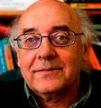The Anti-Defamation League (ADL) Global Survey which recently identified South Africa as second only to Poland in the anti-Jewish stakes has been greeted with disbelief by a range of Jewish voices, including the South African Jewish Board of Deputies. For Professor Karen Milner, Vice Chair of the Board, “many of the findings concerning South Africa are at best highly questionable and sometimes clearly wrong”. In a powerfully worded statement, the Board disparaged the ADL’s methodology, essentially accusing it of Eurocentrism, while pointing out that there have been very few anti-Jewish incidents in South Africa - something the Board monitors professionally and closely.
Professor Adam Mendelsohn, Director of the Kaplan Centre at UCT, similarly questioned the ADL findings, noting that the Centre’s own recent survey presented quite different results. Issues of methodology were again raised. The editor of the South African Jewish Report, Peta Krost Maunder, believes the survey goes against everything she has experienced and simply “can’t be true.” “Rubbish” was the word used by Jeremy Gordin in Politicsweb.
In point of fact, this is not the first attitudinal survey to reveal disturbing findings. In 1970, Stuart Buxbaum found that both “Coloureds” and “Blacks” in a Soweto matriculation group generally held unfavourable attitudes towards Jews - attributed by Buxbaum to a “carry over of a general attitude of social distance of many groups towards Jews” and the phenomenon of “haves” and “have nots”. Jews were “singled out by the non-Whites as being the visible symbol of White financial wealth, a direct result of the depressed economic position of the non-Whites”. In effect, explained Buxbaum, it was a form of displaced aggression.
A year later, in another survey of (only) Black African matriculants in Soweto, the sociologist Melville Edelstein found that the pupils he interviewed experienced a greater “social distance” in relation to Jews than towards English-speakers in general. Those interviewed told Edelstein that an African who was loathe to part with his money was described as being as “stingy as a Jew”. In Edelstein’s view such prejudice arose from New Testament teaching in school and church.
Saths Cooper, a psychiatrist and one-time President of the Azanian People’s Organisation, confirmed this perception in an interview conducted in the late 1980s. “The common reaction, and this is throughout the black community - is to classify any exploiter as a Jew, even if he happens to have a black skin, he appears to be in the Shylock mould”, said Cooper.
Further attitudinal indications emerged in a survey conducted by the Human Sciences Research Council in 1994 among urban South African elites. The study showed that black elites harboured substantial antipathy towards Jews.
Almost one in five of the respondents said that the Jewish community “irritated” them because, in descending order of frequency, they were parasites, snobs, racists, anti-Christ, and unpatriotic; almost the same proportion approved of right-wing antisemitic actions, and nearly one in three considered the Jewish community to be “mostly a liability” to South Africa.
Much the same emerged in a Pew Global Attitudes Survey of 2008 which found that South Africans hold some of the most negative views of Jews outside of the Muslim world. According to that survey, 46 percent of South Africans harbour unfavourable views of Jews and of those 46 percent, two-thirds dislike Jews in the extreme. As one headline had it, “South Africa almost tops anti-Semitism charts.”
Certainly, the ADL is not alone. But how do we reconcile its findings with local self-assessment as well as anti-Jewish incidents? It seems to me that one must distinguish between what the historian Todd Endelman has called “ideational” or “private” from “programmatic” antisemitism. The former relates to attitudes, and the latter to political action. It is important when commenting on these ADL results to keep in mind the difference between the two.
Furthermore, it needs to be said that in the new South Africa, anti-Jewish ideas or attitudes - to the extent that they exist - have never threatened to transform into party-political action. While some politicians have displayed crass Jew-hatred, and while formal responses from the ANC to those who crossed the line has often been limp, at no time has a “Jewish Question” been employed as a political plank as was the case with völkisch Afrikaner nationalists in the 1930s and early 1940s.
On the contrary, in the wake of the long struggle against racism and apartheid, any hint of racism and discrimination has been frowned upon in democratic South Africa. Constitutional (Chapter Nine) institutions, moreover, have been designed to safeguard human rights and uphold the dignity of all. The celebration of diversity encapsulated in the notion of the “rainbow nation” has also served as an antidote to ethnic hatred.
But beneath the surface things can be different. Under specific conditions ideas can turn into action. This is what happened in South Africa during the 1930s and 1940s. The transformation from “private” to “public” antisemitism was related to specific traumas: the intensification of poor whiteism following the impact upon South Africa of the world depression, the emergence of Nazism in Europe, the rise of an exclusivist Afrikaner nationalism, and the upward mobility of Jews. But we should never minimize ideas.
A slow maturation of an anti-Jewish stereotype dating back to the nineteenth century prepared the way for a “Jewish Problem”. “Thinking bad things about Jews” can result in “doing bad things to Jews”, as Gordin seemingly acknowledges when quoting David Saks of the SA Jewish Board of Deputies. Heinrich Heine was even more precise: “Thought precedes action as lightening precedes thunder”.
Milton Shain is Emeritus Professor in the Department of Historical Studies at UCT. His latest book A Perfect Storm. Antisemitism in South Africa 1930-1948 was published by Jonathan Ball in 2015. A version of this article first appeared in the South African Jewish Report.

